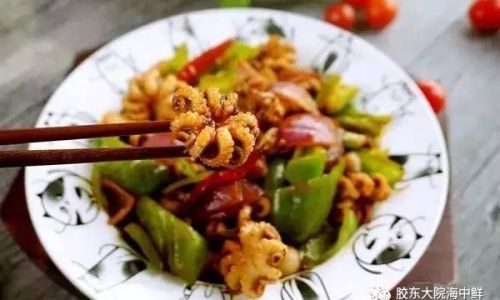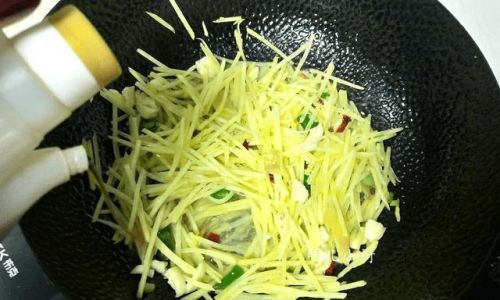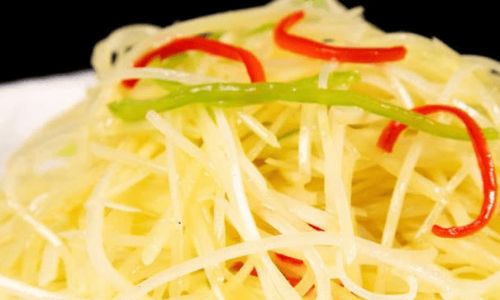Stir-fried octopus, known in Chinese cuisine as bào chǎo bā zhǎo yú, is a dish that marries the briny sweetness of the ocean with the fiery intensity of wok-hei, the coveted “breath of the wok.” This culinary masterpiece, revered across East and Southeast Asia, transforms a seemingly humble cephalopod into a tender, aromatic delight. Beyond its reputation as a street food favorite or a banquet centerpiece, stir-fried octopus embodies the essence of Asian cooking: precision, balance, and respect for ingredients. This article delves into the history, techniques, and cultural significance of this dish, offering a roadmap for home cooks eager to master its preparation.
A Historical Tapestry: From Coastal Villages to Urban Kitchens
The story of stir-fried octopus begins in coastal regions where humans have harvested octopus for millennia. In China, archaeological evidence suggests octopus consumption dates back to the Han Dynasty (206 BCE–220 CE), with coastal fishermen developing rudimentary drying and stir-frying methods to preserve their catch. Similarly, in Korea and Japan, octopus became a dietary staple due to its abundance and nutritional value. Over centuries, stir-frying emerged as the preferred cooking method, as it required minimal fuel and retained the octopus’s delicate texture.

In modern times, stir-fried octopus has transcended its humble origins. From bustling night markets in Taipei to Michelin-starred restaurants in Tokyo, chefs reinvent the dish with gourmet twists, incorporating ingredients like truffle oil or foie gras. Yet, its soul remains rooted in tradition—a testament to the enduring power of simple, honest cooking.
The Anatomy of Flavor: Ingredients That Define the Dish
At its core, stir-fried octopus relies on three pillars: the octopus itself, aromatic vegetables, and a medley of sauces and spices.
The Octopus: Freshness is Non-Negotiable
The ideal octopus for stir-frying is small to medium-sized (1–2 pounds), as larger specimens tend to be rubbery. Freshness is paramount; look for specimens with glossy skin, intact suction cups, and a mild oceanic aroma. Frozen octopus, while acceptable, must be thawed slowly in the refrigerator to prevent texture loss.
Aromatic Allies: Garlic, Ginger, and Chili
These trio of ingredients forms the dish’s flavor backbone. Fresh garlic, minced or sliced, adds pungency, while ginger imparts a warm, citrusy note. Bird’s eye chilies or Sichuan peppercorns introduce controlled heat, balancing the octopus’s richness.
Vegetables: Crunch and Color
Common additions include sliced onions, bell peppers, scallions, and snap peas. These vegetables contribute textural contrast and visual appeal, turning the dish into a vibrant mosaic.
Sauces: The Alchemy of Umami
A harmonious blend of soy sauce, oyster sauce, rice wine, and a touch of sugar creates the signature glaze. In Korean variations, gochujang (fermented chili paste) or doenjang (soybean paste) may be added, while Chinese chefs sometimes incorporate black vinegar for acidity.
The Culinary Ballet: Step-by-Step Preparation
Mastering stir-fried octopus demands attention to detail at every stage, from tenderizing the octopus to achieving wok-hei.
Tenderizing the Octopus: The Key to Tenderness
Octopus contains collagen-rich connective tissue, which can render it chewy if improperly cooked. Common tenderizing methods include:
- Mechanical Tenderizing: Pounding the octopus with a meat mallet or scoring the flesh diagonally.
- Chemical Tenderizing: Marinating in a mixture of baking soda and water (1 teaspoon per 4 cups) for 30 minutes to break down proteins.
- Blanching: Simmering the octopus in court-bouillon (flavored water) for 20–30 minutes until tender, then shocking in ice water.
Cutting Techniques: Maximizing Surface Area
Slice the octopus into ½-inch rings or strips to ensure even cooking. Retain the ink sac (if present) for a subtle briny flavor, or discard it for a cleaner taste.
The Wok: Your Culinary Ally
A carbon-steel wok, preheated until smoking, is essential for achieving the coveted Maillard reaction—the chemical process that browns proteins and caramelizes sugars. Ensure your ingredients are prepped and within arm’s reach; stir-frying is a rapid, one-pan dance.
Cooking Sequence: Orchestrating the Symphony

- Aromatics First: Stir-fry garlic, ginger, and chilies in peanut oil until fragrant (30 seconds).
- Octopus Second: Add the octopus and sear over high heat for 2–3 minutes until lightly charred.
- Vegetables Third: Toss in the vegetables and stir-fry until crisp-tender (2 minutes).
- Sauce Finale: Deglaze the wok with a mixture of soy sauce, oyster sauce, and rice wine. Stir vigorously to coat all ingredients.
Finishing Touches: Garnishes That Elevate
A sprinkle of toasted sesame seeds, a handful of chopped cilantro, or a drizzle of chili oil adds depth and visual flair.
Regional Variations: A World of Flavors
Stir-fried octopus adapts to local palates with remarkable versatility.
Korean Style: Nakji Bokkeum
In Korea, nakji bokkeum features tenderized octopus tossed with gochujang, gochugaru (chili flakes), and sesame oil. Served piping hot, it’s often paired with soju and lettuce wraps for a communal dining experience.
Japanese Style: Tako no Itame
Japanese chefs emphasize umami, pairing octopus with soy sauce, mirin, and bonito flakes. The dish is often garnished with shredded nori or beni shoga (pickled ginger).
Thai Style: Pla Muek Pad Prik
Thai cooks incorporate lemongrass, kaffir lime leaves, and fish sauce for a bright, aromatic twist. Basil leaves added at the end impart a herbal freshness.
Health Benefits: Nutrition Without Compromise
Beyond its gustatory appeal, stir-fried octopus is a nutritional powerhouse. A 3-ounce serving provides:
- 24 grams of protein: Essential for muscle repair and satiety.
- 5 grams of fat: Predominantly heart-healthy polyunsaturated fats.
- Rich in micronutrients: Vitamin B12, iron, selenium, and copper.
Moreover, stir-frying retains more nutrients than boiling or steaming, as the high heat sears vegetables quickly, preserving vitamins and antioxidants.
Common Pitfalls and How to Avoid Them
Even seasoned cooks stumble; here’s how to sidestep classic errors:
- Overcooking the Octopus: Resulting in rubberiness. Solution: Use a timer and test for tenderness by piercing the flesh with a paring knife.
- Crowding the Wok: Steaming instead of stir-frying. Solution: Cook in batches if necessary.
- Skipping Tenderizing: A cardinal sin. Always tenderize, whether mechanically or chemically.
The Cultural Tapestry: Beyond the Plate
In many Asian cultures, octopus symbolizes adaptability and intelligence—traits mirrored in the dish’s versatility. In Korea, nakji is believed to ward off evil spirits, while in China, it’s served during Lunar New Year as a nod to abundance and resilience.
Conclusion: A Dish That Transcends Borders
Stir-fried octopus is more than a meal—it’s a celebration of human ingenuity. From the fishing villages of Jeju Island to the neon-lit streets of Hong Kong, this dish unites generations through its harmonious blend of flavor, texture, and tradition. Whether you’re a novice cook or a seasoned chef, mastering stir-fried octopus offers a gateway to the soul of Asian cuisine. So, fire up your wok, embrace the sizzle, and let the ocean’s bounty dance on your palate.





0 comments